Continuous and Discontinuous Streamer Leader Propagation Phenomena under Slow Front Impulse Voltages in a 10-meter Rod-Plane Air Gap
Abstract
:1. Introduction
2. Experimental Observation
3. Observation Results
3.1. Typical Discharge Phenomenon
3.2. The Continuous and Discontinuous Streamer-Leader Inception
3.3. Continuous Leader Velocity and Charge Density
3.4. Streamer and Final Jump Length
4. Discussion
4.1. Relationship between Dark Period and Corona Charge
4.2. Relationship between Dark Period and Restrike Charge
4.3. Leader Current
5. Conclusions
- The findings of this study have assisted in understanding the higher time resolution images; continuous leader development and its parameter setting were examined with respect to 2D leader length, injected charge, final jump phase and leader velocity for rod–plane configuration. The results indicate that the average continuous leader velocity of the 10-m rod–plane configuration is (1.5 cm/µs to 1.7 cm/µs), which is in agreement with the observation outcomes described by the Les Renardières Group.
- In the 1000 µs case, continuous injected charge under positive long front impulse voltage was observed that shows some similar characteristics to other cases. Furthermore, the proposed method has higher average injected charge of 250 µs compared to the aforementioned cases. By looking at the results, the average final jump length is 2.27 m under switching impulse conditions, while the average final jump length of the long front impulse is 1.81 m and 1.75 m. Finally, the experimental results for the average streamer length is 0.518, and 0.878 under long front impulse condition.
- The observation results show some important characteristics related to its unstable stage, namely, discontinuous streamer-leader propagation processes. A typical two-restrike pulse of current waveforms in a 10-m rod–plane gap under long front impulse are reported in this paper. These results show that the triggering of the restrike after a zero current period is due to the field recovery near the rod tip in the restrike type. Furthermore, an overview of the appearance of channel re-illumination and its parameter settings has been examined with respect to velocity and charge. Finally, the experimental results show that a greater restrike velocity is achieved, and charge has a higher probability distribution of 2500 µs compared to 1000 µs.
Author Contributions
Funding
Acknowledgments
Conflicts of Interest
References
- Kumar, U.; Bokka, P.K.; Padhi, J. A macroscopic inception criterion for the upward leaders of natural lightning. IEEE Trans. Power Deliv. 2005, 20, 904–911. [Google Scholar] [CrossRef]
- Becerra, M.; Cooray, V. Time dependent evaluation of the lightning upward connecting leader inception. J. Phys. D Appl. Phys. 2006, 39, 4695–4702. [Google Scholar] [CrossRef] [Green Version]
- Aleksandrov, N.L.; Bazelyan, E.M.; Carpenter, R.B.; Drabkin, M.M.; Raizer, Y.P. The effect of coronae on leader initiation and development under thunderstorm conditions and in long air gaps. J. Phys. D Appl. Phys. 2001, 34, 3256–3266. [Google Scholar] [CrossRef]
- Gu, D.; Zhou, P.; Dai, M.; Xiu, M.; He, H. Comparison and analysis on over-voltage and insulation coordination of UHV AC transmission system between China and Japan. In Proceedings of the IEEE PES General Meeting, Providence, RI, USA, 25–29 July 2010; pp. 1–7. [Google Scholar]
- Lloyd, K.J.; Zaffanella, L.E. Switching Impulse Tests at Project UHV Using Longwave Fronts. IEEE Trans. Power Appar. Syst. 1981, 100, 510–517. [Google Scholar] [CrossRef]
- Carrara, G.; Dellera, L.; Sartorio, G. Switching Surges with Very Long Fronts (above 1500 us): Effect of Front Shape on Discharge Voltage. IEEE Trans. Power Appar. Syst. 1970, 89, 453–456. [Google Scholar] [CrossRef]
- Cortina, R.; Garbagnati, E.; Pigini, A.; Sartorio, G.; Thione, L. Switching impulse strength of phase-to-earth UHV external insulation—Research at the 1000kVproject. IEEE Trans. Power Appar. Syst. 1985, 104, 3161–3168. [Google Scholar] [CrossRef]
- Kim, J.B.; Shim, E.B.; Shim, J.W. Switching overvoltage analysis and air clearance design on the KEPCO 765 kV double circuit transmission system. IEEE Trans. Power Deliv. 2000, 15, 381–386. [Google Scholar]
- Menemenlis, C.; Harbec, G. Switching impulse breakdown of EHV transmission towers. IEEE Trans. Power Appar. Syst. 1974, 255–263. [Google Scholar] [CrossRef]
- Harada, T.; Aihara, Y.; Aoshima, Y. Influence of switching impulse wave shape on flashover voltages of air gaps. IEEE Trans. Power Appar. Syst. 1973, 3, 1085–1093. [Google Scholar] [CrossRef]
- Menemenlis, C.; Isaksson, K. The front shape of switching impulses and its effect on breakdown parameters. IEEE Trans. Power Appar. Syst. 1974, 93, 1380–1389. [Google Scholar] [CrossRef]
- Les Renardieres Group. Positive discharges in long air gaps at Les Renardieres. Electra 1972, 23, 53–157. [Google Scholar]
- Les Renardieres Group. Positive discharges in long air gaps at Les Renardieres. Electra 1977, 53, 31–153. [Google Scholar]
- Domens, P.; Gibert, A.; Dupuy, J.; Hutzler, B. Propagation of the positive streamer-leader system in a 16.7 m rod-plane gap. J. Phys. D Appl. Phys. 1991, 24, 1748–1757. [Google Scholar] [CrossRef]
- Ortega, P.; Domens, P.; Gibert, A.; Hutzler, B.; Riquel, G. Performance of a 16.7 m air rod-plane gap under a negative switching impulse. J. Phys. D Appl. Phys. 1994, 27, 2379. [Google Scholar] [CrossRef]
- Yue, Y.; He, H.; Chen, W.; He, J. Characteristics of Long Air Gap Discharge Current Subjected to Switching Impulse. J. Power Energy 2015, 1, 49–58. [Google Scholar]
- Da Silva, C.L.; Pasko, V.P. Dynamics of streamer-to-leader transition at reduced air densities and its implications for propagation of lightning leaders and gigantic jets. J. Geophys. Res. Atmos. 2013, 118, 13561–13590. [Google Scholar] [CrossRef]
- Bondiou, A.; Gallimberti, I. Theoretical modelling of the development of the positive spark in long gaps. J. Phys. D Appl. Phys. 1994, 27, 1252–1266. [Google Scholar] [CrossRef]
- Gallimberti, I. The mechanism of the long spark formation. J. Phys. Colloq. 1979, 40, 193–250. [Google Scholar] [CrossRef]




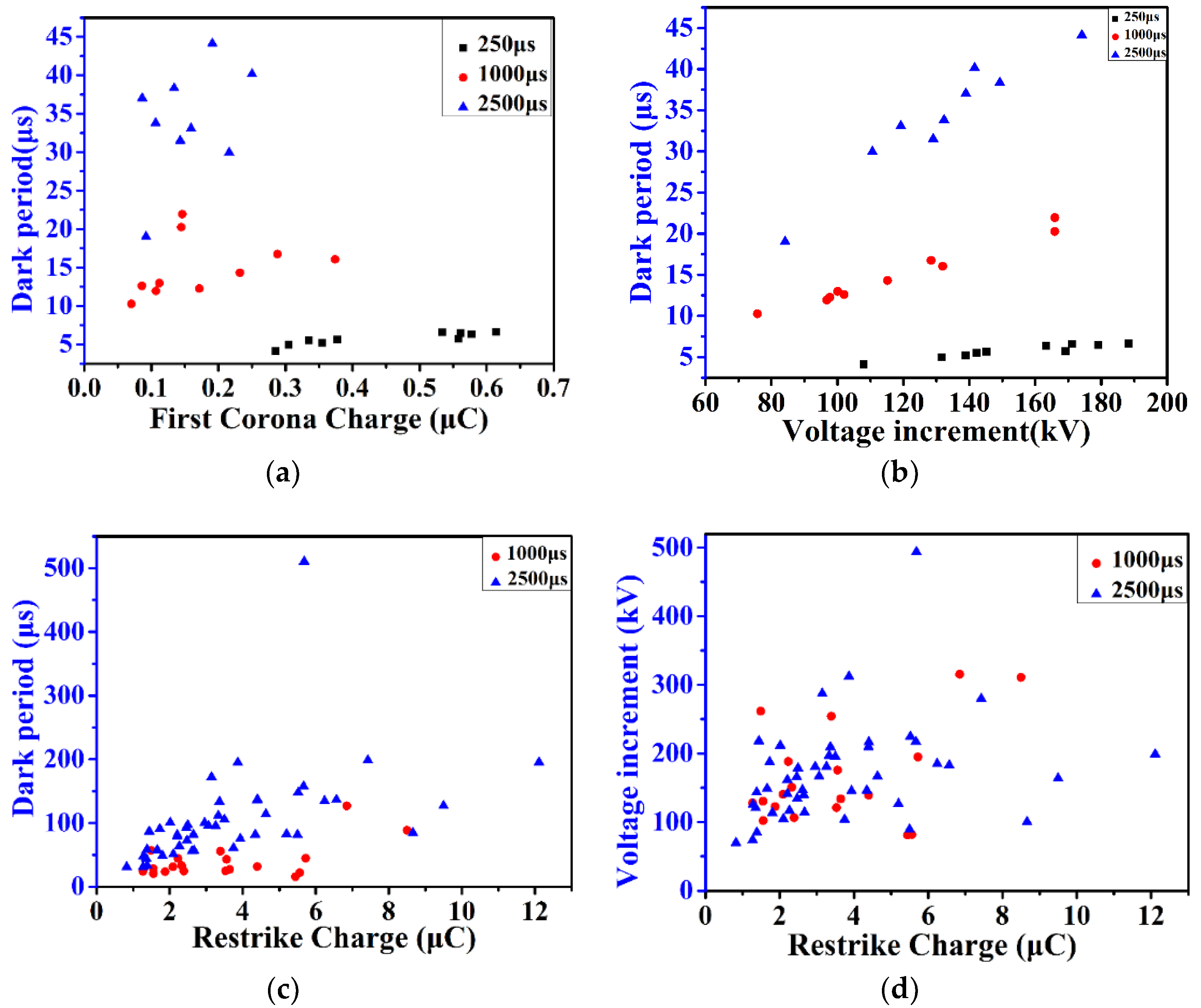
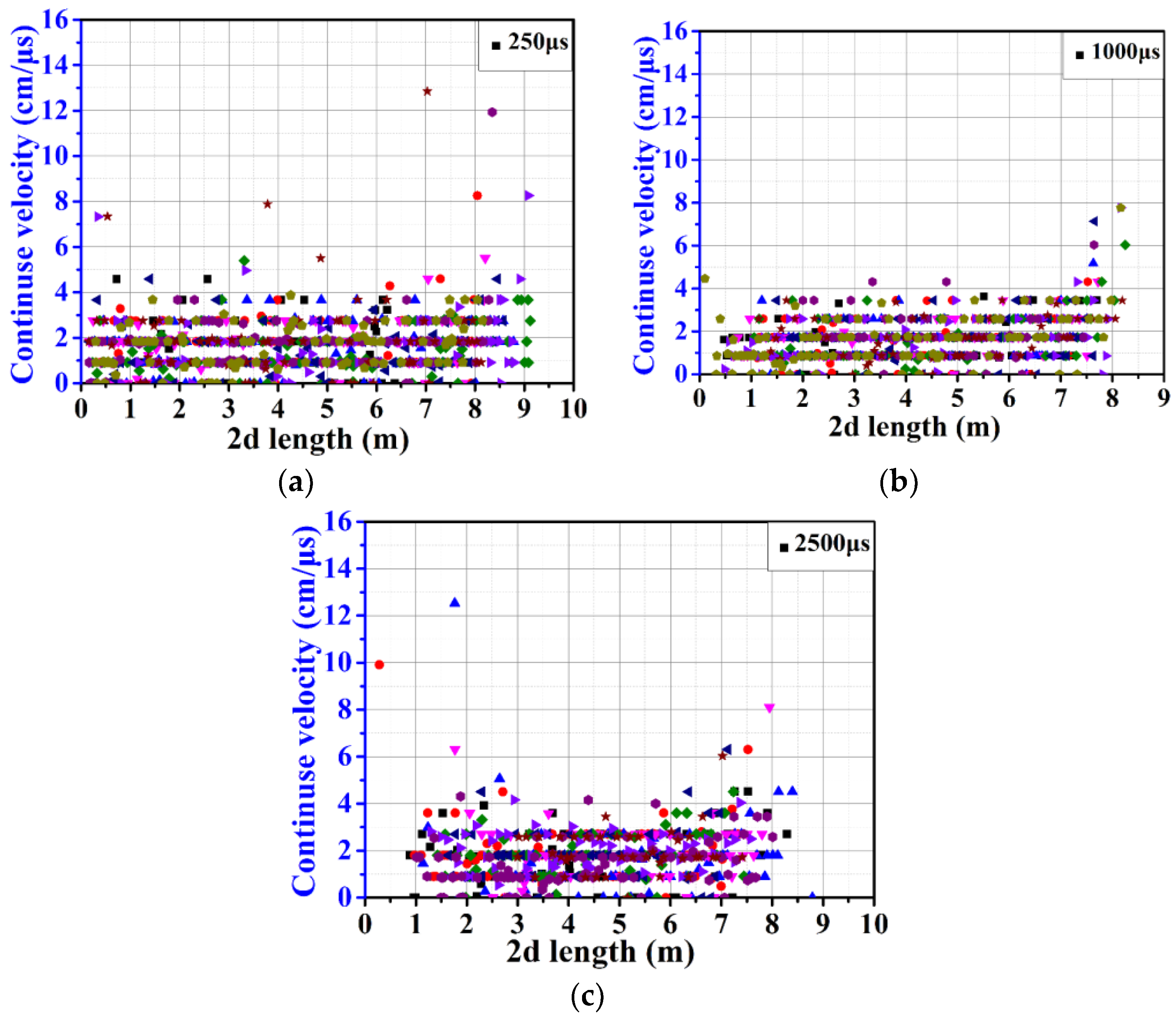


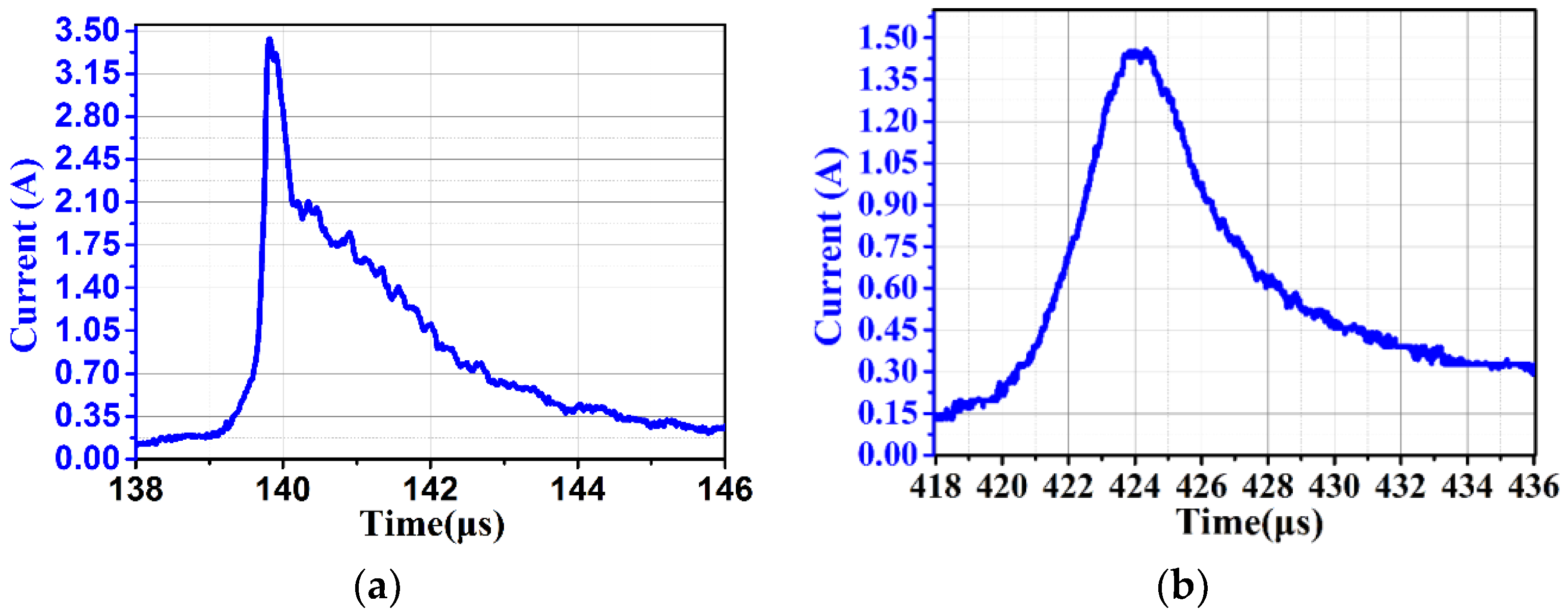
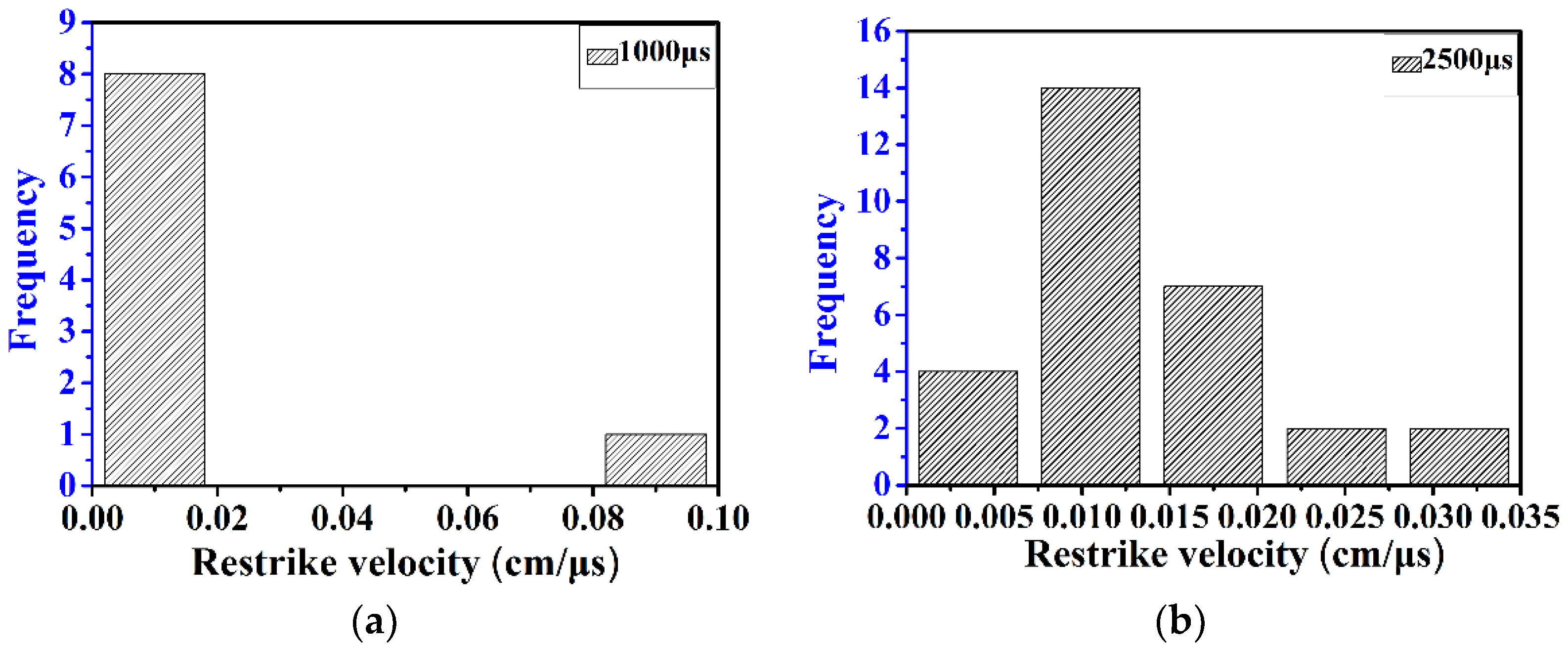
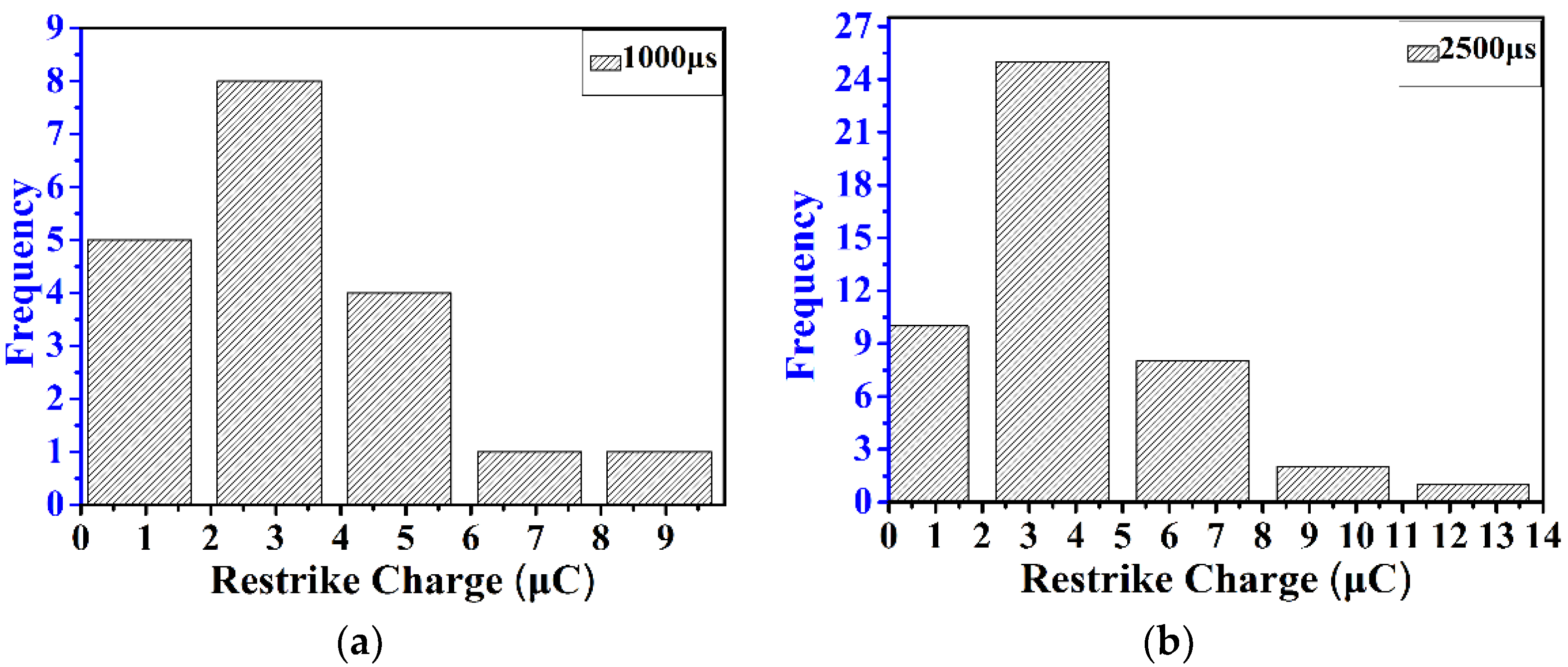
© 2018 by the authors. Licensee MDPI, Basel, Switzerland. This article is an open access article distributed under the terms and conditions of the Creative Commons Attribution (CC BY) license (http://creativecommons.org/licenses/by/4.0/).
Share and Cite
Shah, W.A.; He, H.; He, J.; Yang, Y. Continuous and Discontinuous Streamer Leader Propagation Phenomena under Slow Front Impulse Voltages in a 10-meter Rod-Plane Air Gap. Energies 2018, 11, 2636. https://doi.org/10.3390/en11102636
Shah WA, He H, He J, Yang Y. Continuous and Discontinuous Streamer Leader Propagation Phenomena under Slow Front Impulse Voltages in a 10-meter Rod-Plane Air Gap. Energies. 2018; 11(10):2636. https://doi.org/10.3390/en11102636
Chicago/Turabian StyleShah, Wahab Ali, Hengxin He, Junjia He, and Yongchao Yang. 2018. "Continuous and Discontinuous Streamer Leader Propagation Phenomena under Slow Front Impulse Voltages in a 10-meter Rod-Plane Air Gap" Energies 11, no. 10: 2636. https://doi.org/10.3390/en11102636




